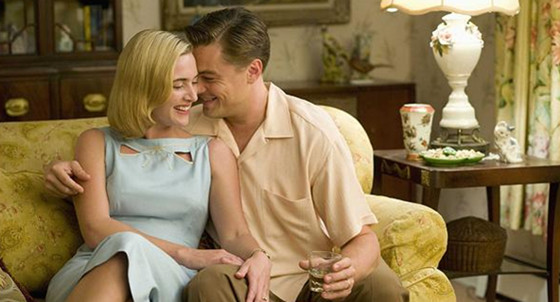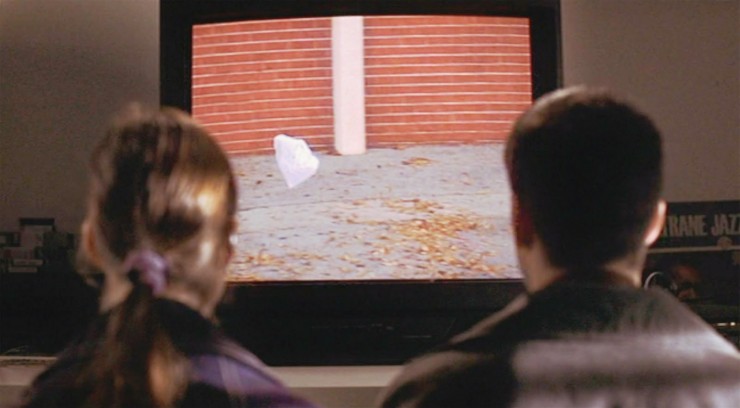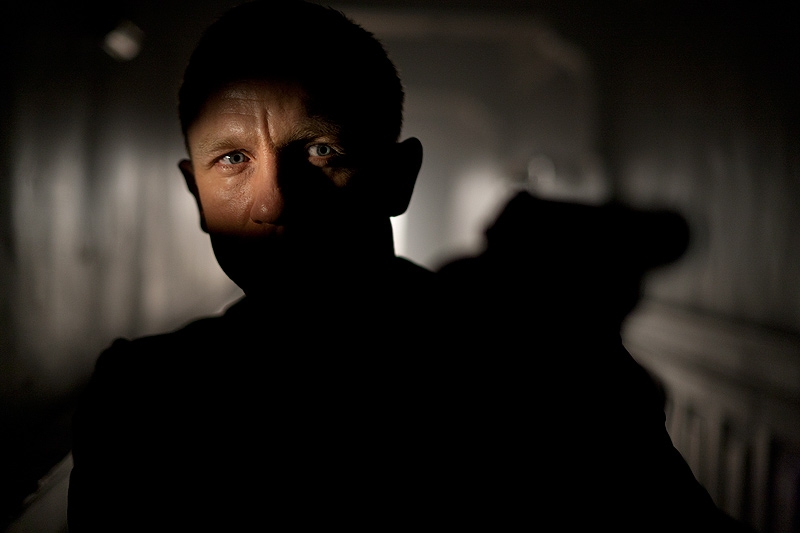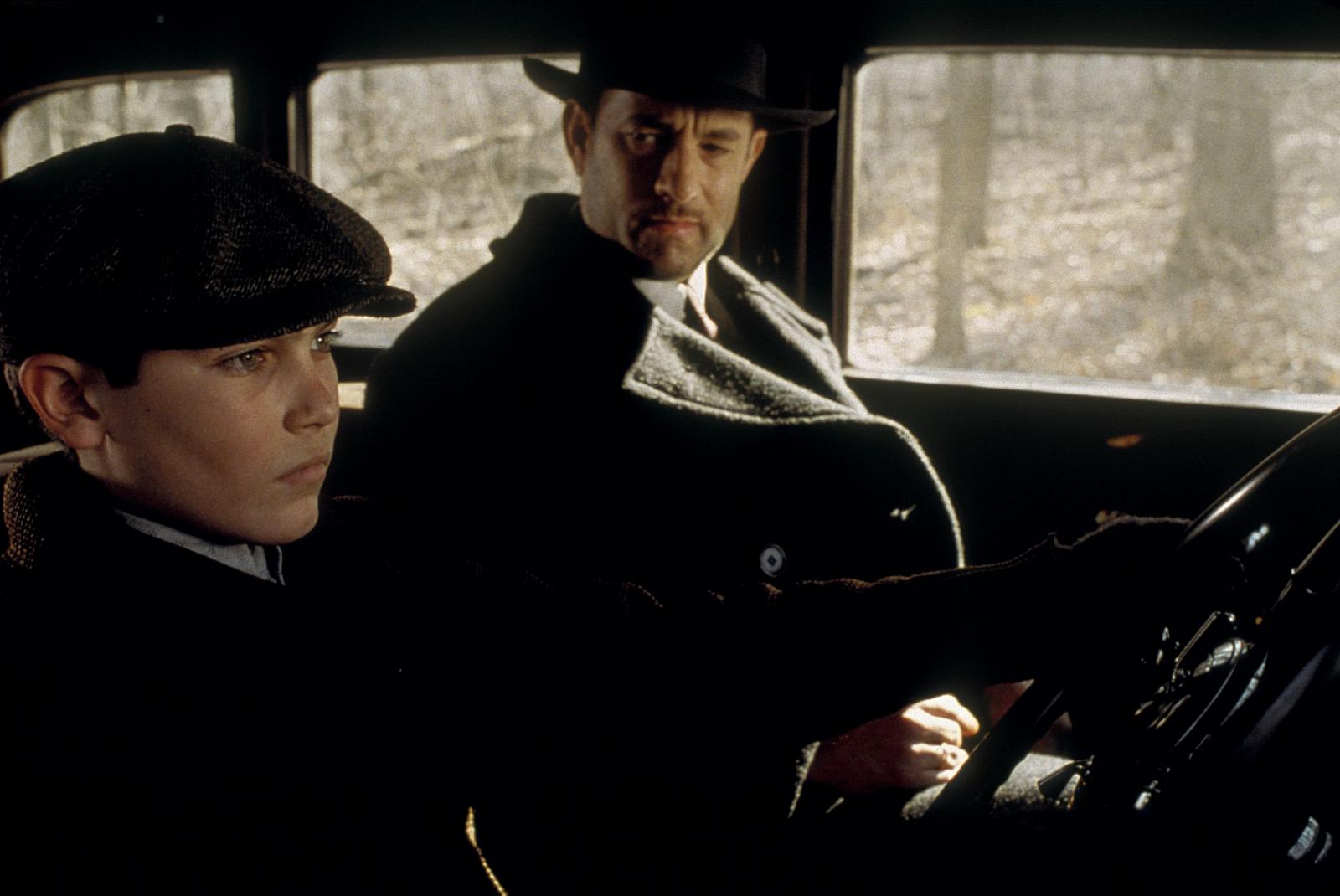5. Revolutionary Road (2008)

After becoming their generation’s Vivien Leigh and Clark Gable in 1997’s ‘Titanic’, Leonardo DiCaprio and Kate Winslet next appeared together in 2008’s ‘Revolutionary Road’. Mendes was married to Winslet at the time, and whatever they discussed on and off set must have worked, as Winslet is stunning as April Wheeler, the wife to DiCaprio’s Frank in a postwar, suburban America. In a moment of life imitating art, Mendes and Winslet would divorce after making this film about marital separation.
The two actors bring their A-game to the table. Frank is wounded by the monotony of his work. April is a failing actress reduced to staying at home with their children. Their neighbours (one of whom is played by Kathy Bates to make it a full ‘Titanic’ reunion) seem to idolise the Wheelers, naive to the decaying marriage and rotting household hidden behind closed doors.
Thomas Newman’s soothing score is hard to distinguish from his work on the 1999 films ‘American Beauty’ and ‘The Green Mile’, yet is elegant enough to supplement the appropriately mundane, faded colour palette of Roger Deakins’ photography. One shot, of a post-abortion blood-stained carpet, is unforgettable.
Despite being achingly emotional and sorrowful, ‘Revolutionary Road’ cannot evade comparisons to Mendes’ first drama about a suburban nuclear family turning toxic. ‘American Beauty’ imposes its legacy over this film. It radiates ‘awards bait’ and lacks the originality to keep itself fully afloat among Mendes’ filmography. Still, it is an essential watch, especially for the acting on display during Frank’s “swell breakfast.”
4. American Beauty (1999)

Like the 1990s films of Quentin Tarantino, David Fincher and Martin Scorsese, ‘American Beauty’s’ cultural impact can be best found through its poster placement on a film student’s walls and desktops. Embraced by growing cinephiles who start their film journeys going through the IMDb Top 250, Sam Mendes’ first film is a complex and divisive drama that has been marred by disgraced actor’s Kevin Spacey leading role and the dubious sexual politics associated with his character.
Mendes acknowledged the growing divisiveness of his debut years later, viewing it as inevitable as he himself thought the initial praise was exuberant, especially when the film made an incredible $300 million worldwide. So whilst the consensus is now skewed towards ‘American Beauty’ being ‘not a masterpiece’, it is important to still stress that this is a very good film.
After a run of legendary crime films (‘Se7en’, ‘The Usual Suspects’, ‘L.A. Confidential’), Kevin Spacey positioned himself in a lead role as Lester Burnham. For those able to divorce the art from the artist, this is an outstanding performance. Mendes frequently frames Lester in enclosed spaces to create a sense of suburban imprisonment. Lester’s attraction to Mena Suvari’s young Angela Hayes is his transgression from mundanity; his escape from an adulterous wife and a distant daughter.
Conrad Hall won an Academy Award for his memorable visuals which favoured wider shots instead of close-ups. The petal imagery is iconic, as is the aimless bag pirouetting in the wind. And, in their first collaboration, Thomas Newman’s percussive score elevates Mendes’ direction by adding a tender and laidback tone – a contrast to the heightened tensions within the Burnham family.
3. 1917 (2019)

World War I is rarely the standard topic for a war film. Hollywood prefers the clean morality of World War II or the anti-establishment of Vietnam for making films about soldiers and battles. So whilst ‘Paths of Glory’ and ‘Lawrence of Arabia’ easily rank among the pinnacle of WWI films, it was not too hard for ‘1917’ to also be considered worthy of comparison. Sure, there was Steven Spielberg’s ‘War Horse’, but finding a thoughtful, well made film about the Great War is almost as hard as delivering a message across enemy territory. Almost.
‘1917’ is mostly renowned for its format. Following his experimentation with it for the opening four minutes of ‘Spectre’, Mendes commits to telling his film in two silky smooth continuous shots. Captured exquisitely by Roger Deakins (who bagged his second Academy Award) and stitched together by both editor Lee Smith and some invisible CGI artists, the result is a marvel. The intent here is to allow time to feel real for these characters – every second matters. Based on Mendes’ grandfather’s experiences in WWI, ‘1917’ follows two British soldiers (George MacKay as Lance Corporal William Schofield and Dean-Charles Chapman as Lance Corporal Tom Blake) who are sent across No Man’s Land with a vital message. If they fail, 1,600 men will die in an imminent attack, one of whom is the brother of Blake.
This is a pure exercise in style. Like ‘Dunkirk’ it uses a pounding, omnipresent musical score to shred the nerves. Its cinematography is a triumph in framing beautiful stills among mobile camera movements, with seamless transitions between the numerous long takes creating an unblinking experience.
Despite the technical flair (and flares), Mendes allows us to care for Schofield and Blake. His personal connection to the original screenplay acts as an ode to both his grandfather and to all of the messengers who risked their lives trying to save others. ‘1917’ allows us moments of rest (if only because it is easier to continue the one-shot than an action sequence) before the epic, cathartic final scenes.
2. Skyfall (2012)

James Bond played catch-up with Christopher Nolan’s ‘Dark Knight’ trilogy in the 2000s. ‘Batman Begins’ paved the way for the gritty reboot which cemented ‘Casino Royale’ as a refreshing 007 film. Then ‘The Dark Knight’ reimagined the scope, themes and subversions of a superhero film. Sam Mendes’ ‘Skyfall’, released in 2012 following the patriotic London Olympic Games and the Queen’s Diamond Jubilee, took a major leaf from Nolan’s beloved sequel. This is another reimagining of the 007 formula, and a highly subversive one too.
The introduction of Ben Wishaw’s extremely young Q is one of the more notable deviations from the established tropes. But Mendes is unrelenting in stripping James Bond down as both a narrative and a character: Bond is ‘killed’ and off-duty for the beginning of the film, M is the ‘Bond girl’ in need of protection, the villain goes to Bond’s ‘lair’ in the third-act and fends off the traps laid by 007 and his ‘henchman’ Kincade, Moneypenny is shown as a field operative, and even Bond’s sexuality is playfully teased with. Doing all of this is not a feat; doing it all so mellifluously that ‘Skyfall’ still feels quintessentially Bond is the accomplishment here.
Daniel Craig is great as the spy. Here he faces off with his broken mirror image: Javier Bardem’s Raoul Silva. Silva was left for dead by M and MI6, holding a grudge and desire for revenge since. Bond, having been left for dead, is still man enough to see it as service for Queen and country, and gets right back on with saving the very person who said “take the bloody shot” that subsequently got him blasted off an Istanbul train. Silva’s plan, taking heavy inspiration from Heath Ledger’s Joker with the whole ‘I wanted to be captured’ angle (as well as the ludicrous nature of it all – thinking about the London Underground chase hurts the brain), is the weakest part of the script.
But what a script it still is! Bouncing from the rooftops of Istanbul to the neon-smothered skyscrapers of Shanghai before bringing Bond back to home soil (with Roger Deakins capturing Scotland’s stunning landscapes), the story is constantly exhilarating because of how engaging all of the characters are in these surroundings. One of the best blockbusters of the 21st century.
1. Road to Perdition (2002)

“I’m glad it’s you.” Paul Newman’s last line in a live-action film reaffirmed the legendary actor’s status as one of the all time great stars. 2002’s ‘Road to Perdition’ is as much a farewell to Newman as it is the epitome of Mendes’ filmmaking quality. A moderately under-seen film, this is by default the greatest gangster film with a runtime under two hours. Set in 1931, Tom Hanks plays against type as Michael Sullivan Sr., a killer who works for the Irish Mob, led by his surrogate father John Rooney (Newman). Michael’s son of the same name is the point-of-view for the events that follow – Rooney’s temperamental son Connor (a very young Daniel Craig) murders Sullivan’s wife and second child, causing the father and son to go on the run. Robbing banks together, their frosty relationship begins to thaw.
‘Road to Perdition’ is based on the DC comic book of the same name. Conrad Hall, who won a posthumous Oscar for his spellbinding cinematography here, uses the story’s visual origins to imbue the picture with poetic themes and a real elegance. Water is a constant: like ‘The Departed’ and its Xs that foreshadow death, the presence of Adam’s ale also signifies a murder. Whether this is in a bathtub, by the beach or, in the signature scene of Mendes’ career, the rain, water is the source of death here. That latter scene, in which the aforementioned Newman line is muttered, is impactful. With Thomas Newman’s stirring score overplaying the muted Tommy Gun fire and the slow-motion extending the importance of this quick shootout, Sullivan’s revenge is an overwhelming emotional experience.
Hanks is wonderful as a cold father. His presence is subversive to his own screen persona and helps ‘Road to Perdition’ feel unlike any other gangster picture. Craig is a grade-A piece of work. And Jude Law, as an eccentric killer for hire, is dazzlingly memorable. But this is Newman’s film. Acting with the weight of his whole career behind him, his John Rooney is undeniably villainous yet heartbreakingly likeable. Like Vito Corleone before him, he is a good man who is a criminal. His son is a bad man who is a criminal. This distinction enhances the viewing pleasure, twisting the mind about who to support and making “I’m glad it’s you” such a superb final line. A masterclass in every aspect of filmmaking.